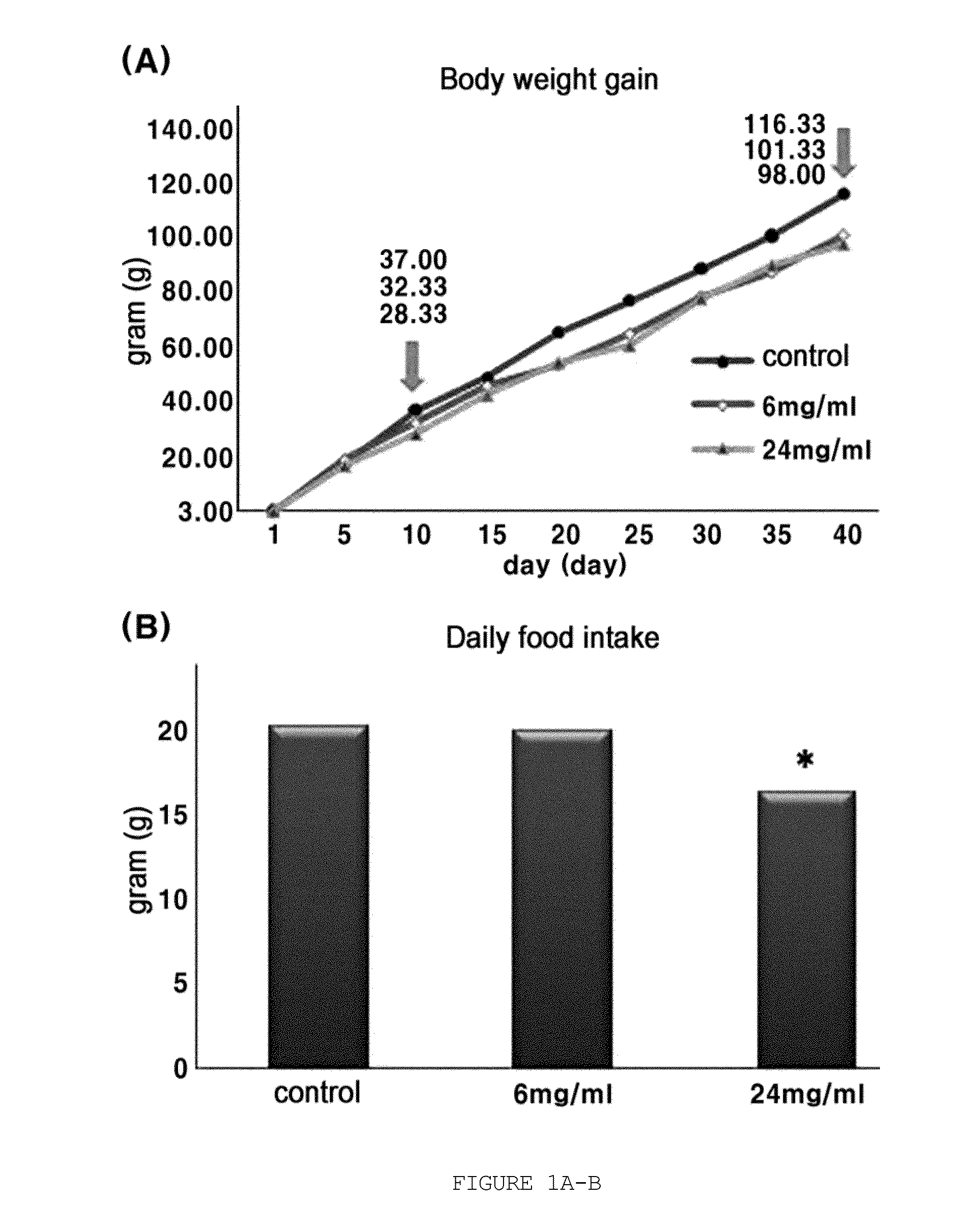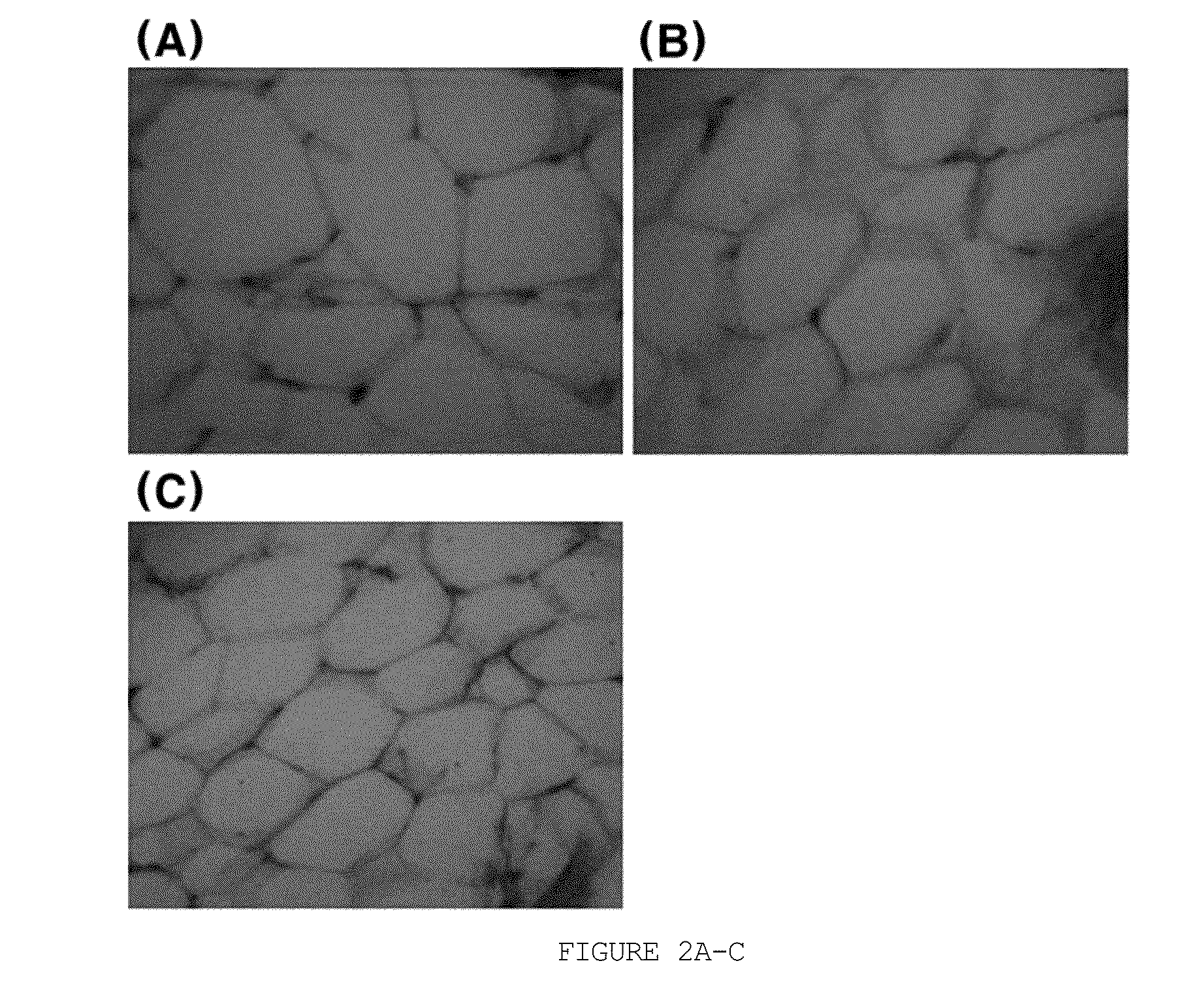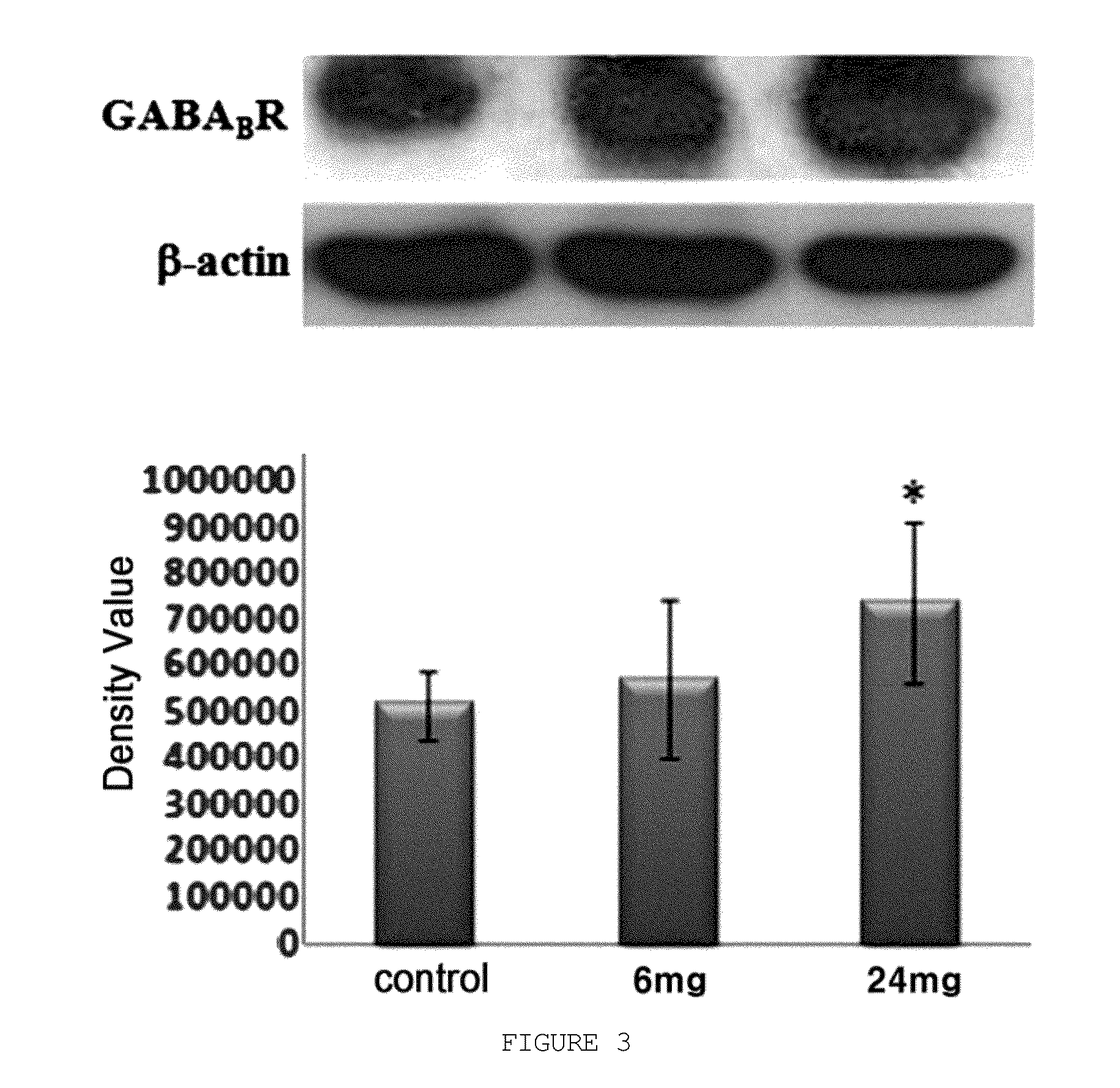Method for screening of agent for treating or preventing obesity
a technology for treating or preventing obesity and agents, applied in the field of screening an obesity prevention or treatment agent, can solve the problems of enervation, perspiration and lethargy, adverse health effects, concomitant occurrence of side effects, etc., and achieve the effects of preventing or treating obesity, wide application range, and easy detection
- Summary
- Abstract
- Description
- Claims
- Application Information
AI Technical Summary
Benefits of technology
Problems solved by technology
Method used
Image
Examples
reference example 1
Preparation of Tissues and Samples
[0038]For hematoxylin-eosin staining, an epididymal white adipose tissue (WAT) was fixed at 4° C. for 72 hrs in ice-chilled 1× PBS containing 4% para-formaldehyde, and immersed at 4° C. for 72 hrs in 20% sucrose sucrose phosphate buffer for cryoprotection. The fixed tissue was frozen with O.C.T compound (A. O. USA), and 10 μm coronal sections were made in coronal planes (Leica cryostat CM 3050, Germany). The sections were mounted on a probe-on, positively charged slide at room temperature and stored at −70° C. until use.
example 1
Assay for Preventive and Therapeutic Effect of Anthocyanin on Obesity
[0039]For use in assay for the preventive and therapeutic effect of anthocyanin on obesity, male Sprague-Dawley rats, 60 days old (the Experimental Animal Breeding Center of the Gyeongsang National University, Jinju, Korea)) were divided groups of four which were then orally administered with anthocyanin at a dose of 6 mg and 24 mg, respectively, or not administered with anthocyanin for a control. They were maintained for 40 days in a temperature-controlled condition with lighting 06:00-20:00. While being maintained, the rats in each group were monitored for weight change and daily food uptake, and the results are shown in FIG. 1. FIG. 1 shows graphs of weight changes (A) and daily food uptake (B) in animals with or without administration of anthocyanin.
[0040]As can be seen in FIG. 1, weight was increased by 69 g from 32.33 g to 101.33 g in the group administered with 6 mg of anthocyanin and by 69.67 g from 28.33 g...
example 2
Measurement of Epididymal White Adipose Tissue
[0041]The animals bred as in Example 1 were collectively sacrificed at 10:00 AM 40 days after the oral administration, and epididymal white adipose tissue (WAT) was excised from each sacrificed animal and used for comparison of obesity. The epididymal WAT was fixed at 4° C. for 72 hrs in ice-chilled 1× PBS containing 4% para-formaldehyde, and immersed at 4° C. for 72 hrs in a 20% sucrose phosphate buffer for cryoprotection. The fixed tissue was frozen with O.C.T compound (A. O. USA), and 10 μm coronal sections were made in coronal planes (Leica cryostat CM 3050, Germany). The sections were mounted on probe-on, positively charged slides and thawed at room temperature for 3 hrs. The thawed slides were washed twice for 15 min in PBS, stained for 3 min with hematoxylin-eosin, and then washed again for 1 min with distilled water, followed by treatment with ethanol (70 to 100%) and 100% xylene for 3 min each. Cover slips were mounted on the sl...
PUM
| Property | Measurement | Unit |
|---|---|---|
| temperature | aaaaa | aaaaa |
| weight | aaaaa | aaaaa |
| weight | aaaaa | aaaaa |
Abstract
Description
Claims
Application Information
 Login to View More
Login to View More - R&D
- Intellectual Property
- Life Sciences
- Materials
- Tech Scout
- Unparalleled Data Quality
- Higher Quality Content
- 60% Fewer Hallucinations
Browse by: Latest US Patents, China's latest patents, Technical Efficacy Thesaurus, Application Domain, Technology Topic, Popular Technical Reports.
© 2025 PatSnap. All rights reserved.Legal|Privacy policy|Modern Slavery Act Transparency Statement|Sitemap|About US| Contact US: help@patsnap.com



